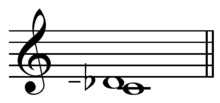
In mathematics, a superparticular ratio, also called a superparticular number or epimoric ratio, is the ratio of two consecutive integer numbers.
More particularly, the ratio takes the form:
- where n is a positive integer.
Thus:
A superparticular number is when a great number contains a lesser number, to which it is compared, and at the same time one part of it. For example, when 3 and 2 are compared, they contain 2, plus the 3 has another 1, which is half of two. When 3 and 4 are compared, they each contain a 3, and the 4 has another 1, which is a third part of 3. Again, when 5, and 4 are compared, they contain the number 4, and the 5 has another 1, which is the fourth part of the number 4, etc.
— Throop (2006), [1]
Superparticular ratios were written about by Nicomachus in his treatise Introduction to Arithmetic. Although these numbers have applications in modern pure mathematics, the areas of study that most frequently refer to the superparticular ratios by this name are music theory[2] and the history of mathematics.[3]
- ^ Throop, Priscilla (2006). Isidore of Seville's Etymologies: Complete English Translation, Volume 1, p. III.6.12, n. 7. ISBN 978-1-4116-6523-1.
- ^ Cite error: The named reference
hhwas invoked but never defined (see the help page). - ^ Robson, Eleanor; Stedall, Jacqueline (2008), The Oxford Handbook of the History of Mathematics, Oxford University Press, ISBN 9780191607448. On pp. 123–124 the book discusses the classification of ratios into various types including the superparticular ratios, and the tradition by which this classification was handed down from Nichomachus to Boethius, Campanus, Oresme, and Clavius.

